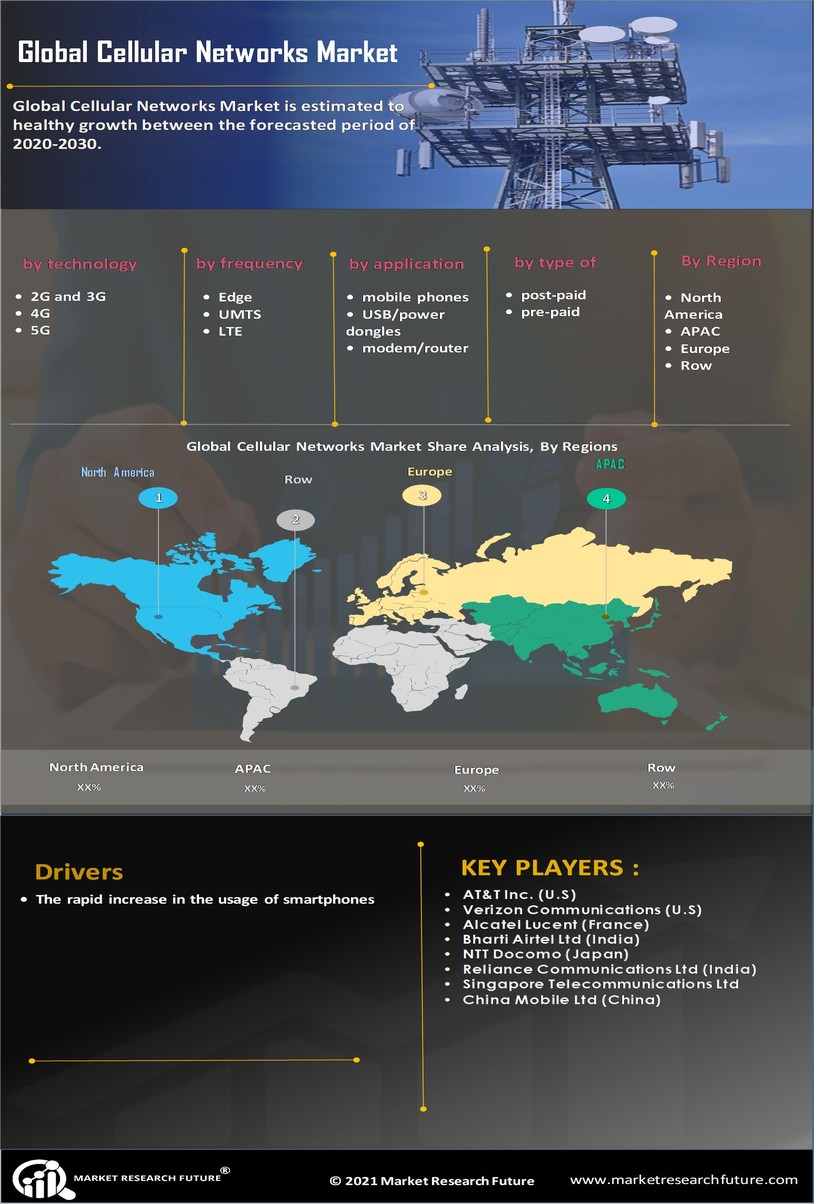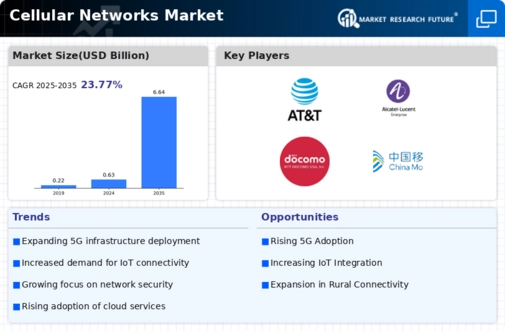Leading market players are investing heavily in research and development in order to expand their product lines, which will help the Cellular Networks market, grow even more. Market participants are also undertaking a variety of strategic activities to expand their footprint, with important market developments including new product launches, contractual agreements, mergers and acquisitions, higher investments, and collaboration with other organizations. To expand and survive in a more competitive and rising market climate, Cellular Networks industry must offer cost-effective items.
Manufacturing locally to minimize operational costs is one of the key business tactics used by manufacturers in the Cellular Networks industry to benefit clients and increase the market sector. In recent years, the Cellular Networks industry has offered some of the most significant advantages to medicine. Major players in the Cellular Networks market, including AT&T Inc., Verizon Communications, Alcatel Lucent, Bharti Airtel Ltd, NTT Docomo, Reliance Communications Ltd, Singapore Telecommunications Ltd, and China Mobile Ltd, are attempting to increase market demand by investing in research and development Technologys.
Designing and developing wireless telecommunications devices and services is Qualcomm Inc. The business sells system software and integrated circuits for mobile phones and other wireless products. Its product line includes integrated circuits for wireless connectivity, power management, consumer wireless devices, cellular modems, and radio frequency transceivers. The company's products are used in a variety of devices, including mobile phones, laptops, tablets, cellular handsets, cameras, servers, routers, access points, wearable technology, voice and music devices, gateway equipment, consumer electronics, desktop computers, and Internet of Things (IoT) devices.
Brazil, China, Germany, Singapore, India, Japan, Taiwan, South Korea, and the US are among markets where the corporation conducts business. The United States' Qualcomm has its headquarters in San Diego, California. In February 2022, Qualcomm Technologies, Inc. launched the Qualcomm® Private Networks RAN Automation Platform, which makes it easier to install and maintain RAN for 5G Private Networks. By reducing system complexity, expediting deployment, streamlining network administration, and improving user friendliness, the cloud-based network management platform benefits clients in a variety of sectors.
The solution is made to operate with core networks, small cells, and the device ecosystem using Qualcomm® FSMTM 5G RAN Platforms.
An embedded wireless infrastructure is offered by Radisys Corporation for use in applications related to public safety, aerospace, and telecommunications. The company's offerings include application software for brand-new IP-based communications services as well as its market-leading ATCA and IP media server platforms. In March 2022, Qucell Networks, a Korean small cell player, revealed that it is delivering 5G small cell solutions for international markets using Radisys' Connect RAN gNodeB software. Qucell is one of the world's leading providers of open telecom solutions.





